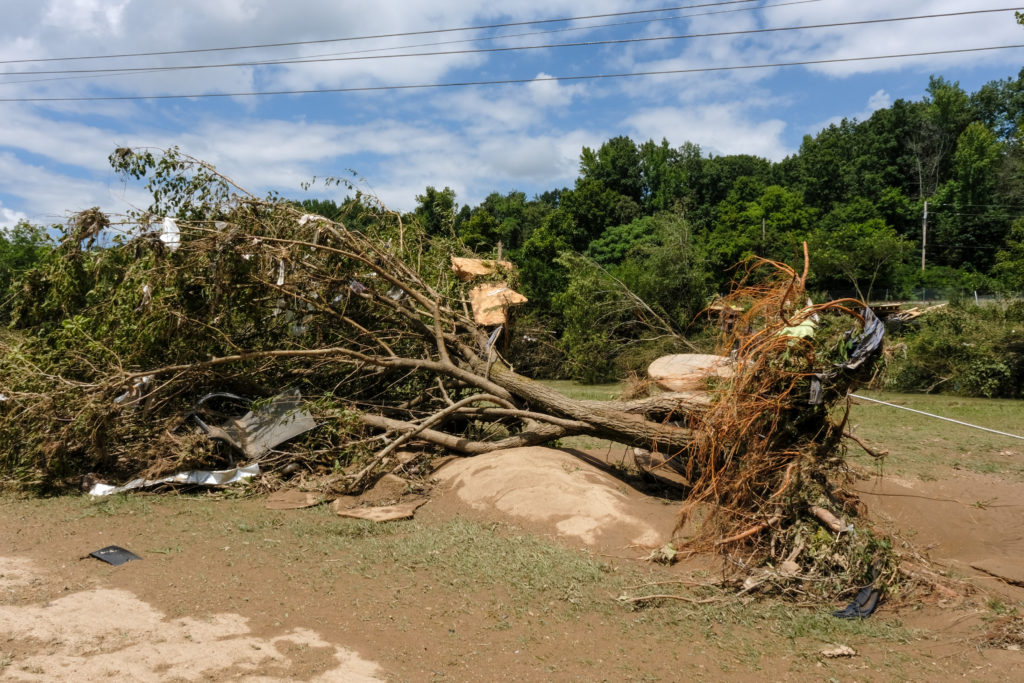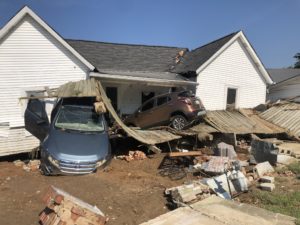
In the U.S., more than 11,000 facilities have “extremely” hazardous chemicals in amounts that could harm people, the environment and property if released. About a third are located in areas with prominent climate hazards, like wildfires, storm surges, flooding and sea level rise.
In Tennessee, the main threat is flooding.
Several dozen facilities — including food companies, the state’s oil refinery and wastewater treatment plants — are vulnerable to flooding, according to the report by the U.S. Government Accountability Office.
 Courtesy U.S. Government Accountability Office
Courtesy U.S. Government Accountability Office About 3,200 hazardous chemical facilities in the U.S., represented by the green dots, are vulnerable to at least one of the following hazards: floods, storm surges, wildfires or sea level rise.
In Nashville, the Purity Dairy facility on Murfreesboro Pike was identified with a moderate flood risk and a “relatively high” social vulnerability, which the Federal Emergency Management Agency defines as the susceptibility of social groups to hazard impacts like death, injury, loss or disruption of livelihood.
The Central Wastewater Treatment Plant, located in Germantown, has a moderate flood risk, and Chairmans Foods LLC, on Elm Hill Pike, has the “highest flood hazard.” But both have a relatively low social vulnerability. Other plants in Tennessee are mostly concentrated near the biggest cities.
The Environmental Protection Agency oversees the regulation of these facilities, which are called “RMP facilities,” because they require special plans for accidental releases under EPA’s Risk Management Plan (RMP) Rule.
But EPA is not “consistently” ensuring that these facilities are preparing for the various threats of a warming world, according to the GAO report.
Climate change is increasing extreme rainfall events in the Southeast — and Tennessee experienced one of the worst last year.
 Caroline Eggers WPLN News
Caroline Eggers WPLN NewsTwo cars swept away by floodwaters collided with a house during the deadly storm in Waverly, Tenn., on Aug. 21, 2021.
In August 2021, the town of McEwen set the 24-hour rainfall record for a non-coastal state with 20.7 inches. Subsequent flooding devastated the town of Waverly, where 20 people died.
While this storm affected a rural area, communities have to prepare for the fact that this type of rainfall can happen anywhere, so adaptation has to be tailored to each city, according to state climatologist Andrew Joyner.
“I think it’s worthwhile to consider the transferability of events,” Joyner said. “What if it happened somewhere else? What if another, even larger, event happened?”

